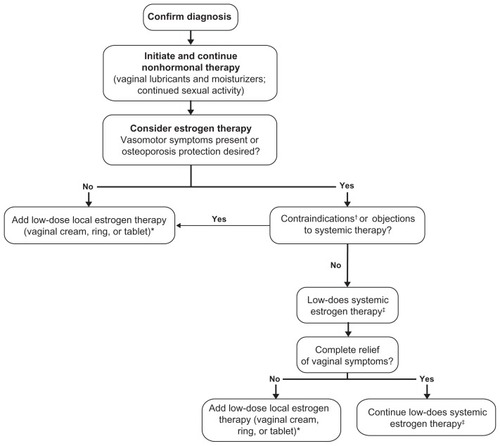Figures & data
Table 1 Symptoms and signs of estrogen deficiency and vaginal atrophyCitation4,Citation8,Citation10
Figure 1 Approach to treatment of vaginal atrophy.Citation9,Citation11
†Undiagnosed abnormal uterine bleeding, breast cancer (except in appropriately selected patients being treated for metastatic disease), estrogen-dependent neoplasia, deep vein thrombosis or pulmonary embolism, arterial thromboembolic disease within the past year, liver disease/dysfunction, pregnancy, or hypersensitivity to estrogen therapy.Citation35 ‡Concomitant progestogen therapy is recommended in women with an intact uterus and who are receiving systemic estrogen therapy to prevent endometrial proliferation and adenocarcinoma.Citation12

Table 2 Commercially available local estrogen therapies
Table 3 Potential solutions to common barriers to identification and treatment of vaginal atrophy